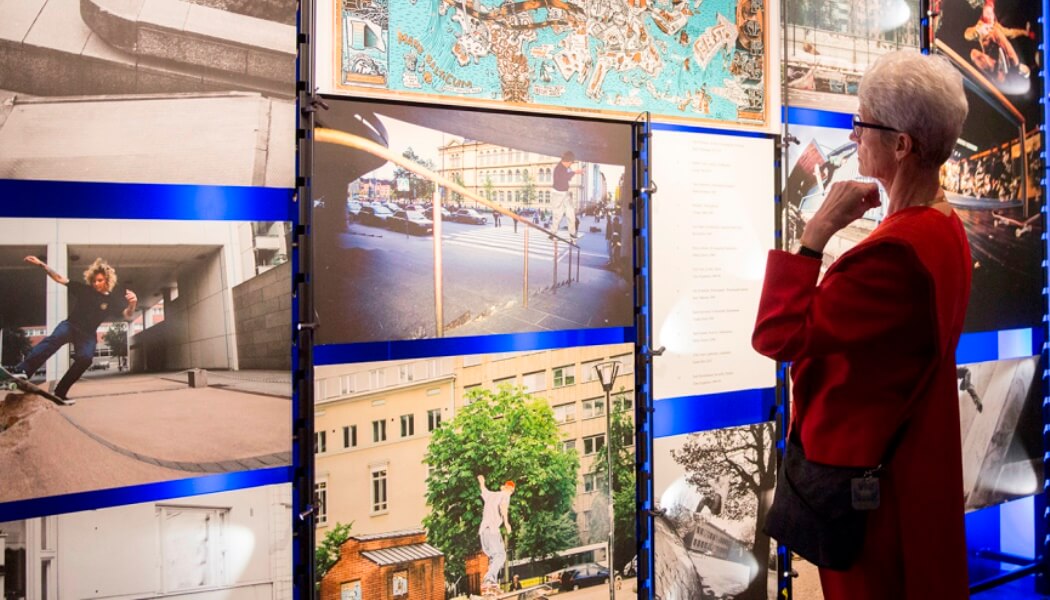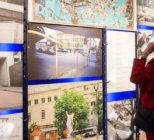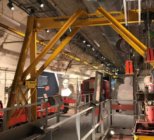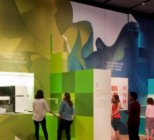As we shall see in our four case studies and the introductory article below, featuring insight from Suzanne MacLeod, Professor of Museum Studies at the University of Leicester, all exhibition design roads should lead to an enhanced visitor experience. Whether it’s from Helsinki City Museum’s permanent exhibition Helsinki Bites, which is a new city exhibition opened last year that was shaped by public consultation or Haley Sharpe Design’s work to put The Postal Museum and Mail Rail at the heart of the community, the onus is on connecting visitors through stories.
As well as the stories, museum professionals also have to think about the balance of information, accessibility and atmosphere of an exhibition and we feature a Q&A with the Science Museum’s 3D exhibition designer, Hannah Payne who talks about making sure ‘all visitors feel comfortable’ viewing an exhibition, which leads us to a case study from lighting architects, Concord who have ‘enhanced the artistic feel’ at the Pushkin State Museum in Moscow
At the School of Museum Studies at the University of Leicester this year’s students will be exploring new processes of exhibition design; where they begin by taking a more participatory approach with colleagues, the wider community, and a designer in residence, which is a shift from a previously narrative-led style where the visitor experience and design came second. This experimental change in style is meant to mirror developments in the sector where museum professionals are beginning to consult with the public about the design of not only exhibitions, but also museums as a whole, so they can discover and implement what ‘they’ want to see in these cultural institutions, with design studios also brought in at the outset.
Professor Suzanne MacLeod, who teaches across a range of topics at the School of Museum Studies, says there is currently a definite shift to participatory processes of exhibition design in museums but because this is a turning point, colleagues in museums and design studios are still working out what that means.
For the past year Prof MacLeod has been on study leave researching a number of projects, one of which is a new edited volume: The Future of Museum and Gallery Design, to be published by Routledge early next year that has contributors from museum professionals and designers all over the world including China and the US.
The book, she says, has a great deal of evidence on these new ways of designing exhibitions including ‘The Museum Under the Arch’ (it’s unofficial title) in St Louis, formerly the Museum of Westward Expansion, which will open in spring 2018. The museum, part of the Jefferson National Expansion Memorial, is run by the National Park Service, which is working with Haley Sharpe Design and according to MacLeod is a model of inclusive design.
“They are pushing the whole question of access as far as it can go and the clever thing there is that the head of the National Park Service has said unequivocally it has got to be equality of experience not just of access,” she says. “So that changes the whole design process.”
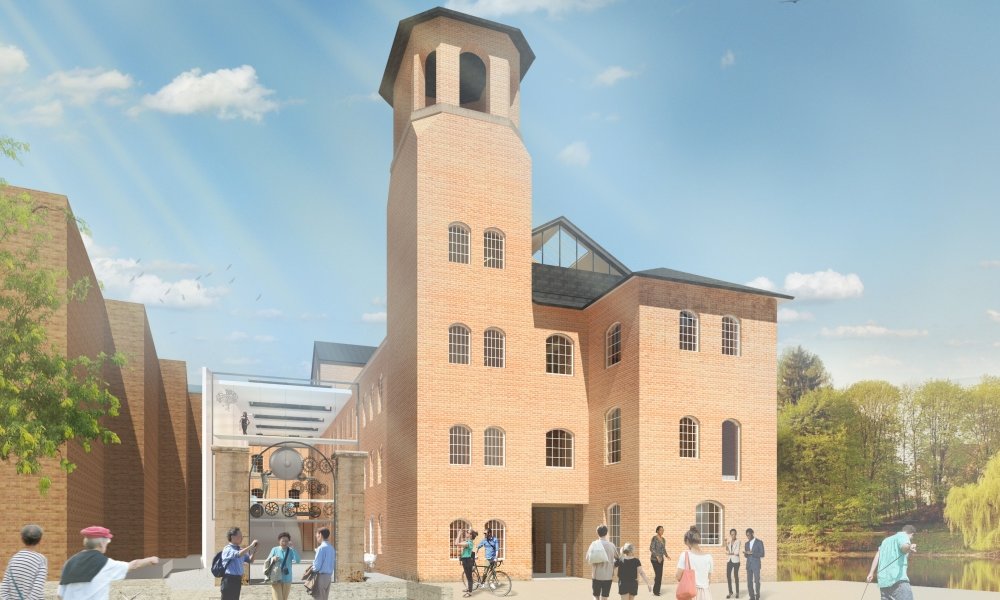
She says the book doesn’t predict the future but makes the point that the future of exhibition design is about cooperation and collaboration and provides recognition of the civic responsibility of museums to engage and make their resources meaningful. “Essentially this book is about reaching out and finding amazing case studies around the world and looking for patterns and really trying to work out where the cutting edge is and who is doing it.”
A project closer to home that has embraced the concept of public participation and early design intervention is Derby Silk Mill’s £16.4m Museum of Making project set to open in 2020. MacLeod says the Museum of Making, which will transform the 300-year-old factory building into a space for innovation and creation, has used human-centred design and in every single aspect has been designed in some way with the involvement of thousands of local people over a five year period.
“In Derby they have brought in a specialist in human-centred design to drive the new museum. So we are learning as a sector about how you include the public’s input. This goes back to the example of the Museum of Liverpool [which opened in 2011] where they collected stories from the public in a massively wholehearted, serious way but of course the design was still then very much managed and developed between the institution, the design studio and the architects. Whereas Derby is trying to push that much further by involving the public in the design.”
Totally different
MacLeod says this is a totally different way of approaching the development of a museum that is centred around talking to people both on what they want and need but also what is important to them by spending time with them and learning more about the way they think about their city. “Another example is the redevelopment of the Museum of Copenhagen where they have taken a similar approach, which is to start by thinking about what it means to be a Copenhagener and what does it mean to different people in the city: this is their starting point for the redevelopment.”
Across all of these projects she says is a new vision of what these civic institutions can achieve and that they only make sense if they’re populated and made active by the input of local people and that they have no other purpose than to provide a civic resource for people of that area.
“I think that this approach is subtly different and new and I am interested in it because it is political, it’s making a point and acting on it that museums are important and they have a role to play in society. There was an assumption in the past that we all needed a certain knowledge and now there’s an assumption that the museum can play a really fundamental role, binding us together by telling us something about our shared history. But importantly, it’s only meaningful if we are there and we are engaging with it.”
Previous In Focus Features
Collections management – new stores, environmental control and photography
Public realm in museums – redeveloping underused land to create fantastic open spaces for visitors
International museum fit-out – UK specialists taking on the world
Workforce Development in museums – changing attitudes and nurturing skills
Income Generation in Museums – creating a better visitor experience while raising revenues
Collections: making museum treasures more accessible and better cared for


